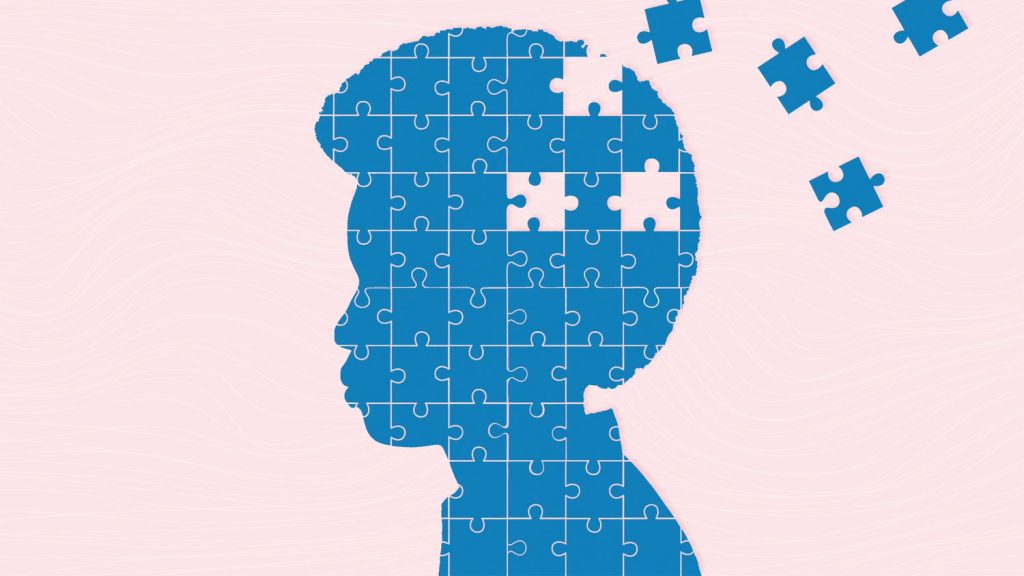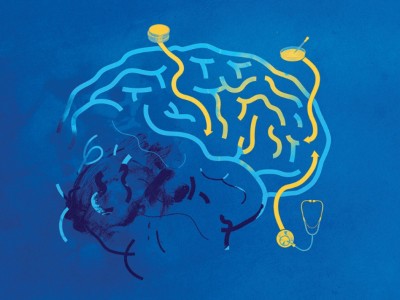Does Alzhiemer’s symptoms worsen due to light sensitivity?
The late afternoon and evening are when sundowning, a characteristic of Alzheimer’s disease, typically manifests. Increased agitation, anxiety, and mood fluctuations are some of its defining characteristics.
The impact of Alzheimer’s disease on the brain has been suggested as one of the causes, however the exact mechanisms remain unclear.

Increased light sensitivity was shown in recent studies using Alzheimer’s disease mice models, which is a result of retinal alterations.
Sundowning is a crippling symptom of Alzheimer’s disease that makes people’s dementia symptoms get worse in the late afternoon and evening.
Some researchers hypothesised that this symptom was caused by brain abnormalities, and a recent study confirmed that immune cells in the brains of Alzheimer’s patients may experience circadian disruptions that increase the accumulation of amyloid beta.
One of the distinguishing features of Alzheimer’s disease is the accumulation of this protein. A psychiatrist from the Rehab Clinics Group named Dr. Alexander Lapa stated in an email:
Both the affected person and their carers may find sunseting upsetting. Increased care requirements and potential major disruptions to daily routines can result from the increase in bewilderment and agitation. Sundowning in some circumstances could endanger the patient’s safety or the safety of those around them.
He continued by saying that many doctors advise individuals with Alzheimer’s disease to follow a daily regimen that includes predictable timings, relaxing hobbies, reducing noise, and making sure there is enough illumination at night.
Increased light sensitivity in Alzheimer’s mice models
The aetiology of sundowning is unknown, despite the incapacitating nature of this symptom of Alzheimer’s disease. Given that it manifests in the middle and late phases of the disease, it may coexist with a number of other symptoms that have all been connected to sundowning, including sleep disturbances, forgetting to eat or drink, and adverse drug reactions.
A group of researchers from the University of Virginia, Charlottesville, Virginia, chose to further explore this connection because sleep disturbance has previously been closely linked to Alzheimer’s disease. Their research was published most recently in Frontiers to Ageing Neuroscience.
It had been thought that sleep disturbance might also result from damage to the brain brought on by the buildup of tau protein and amyloid beta protein, two signs of Alzheimer’s disease.
According to the main author Dr. Heather Ferris, an assistant professor of medicine at the University of Virginia, “We were interested in why sleep and circadian rhythms are disrupted in Alzheimer’s disease.”
After ruling out a number of potential causes in the brain, she stated, “We turned our attention to the retina because we thought the problem would be occurring in the brain.”
According to Dr. Ferris, the retina contains specialized cells known as inherently photosensitive retinal ganglion cells. Although these cells are sensitive to light, they are not used for vision. Instead, these cells are employed to inform the brain that it is daytime.
We discovered that we could activate these cells in Alzheimer’s disease model mice with much less light and that the retina contained a greater number of these cells, she said.
Looking for the cause of the sundowning
Researchers first employed mice models with genetic alterations that resembled Alzheimer’s disease, along with controls, to learn this. To simulate jet lag, they first gave 13-month-old female mice a 6-hour change in their exposure to sunshine before going back to a regular 24-hour schedule.
They discovered that Alzheimer’s disease-affected mouse models retrained to a 24-hour clock pattern more quickly than control mice.
The initial theory put forth by researchers was that this difference resulted from a higher concentration of microglia, a kind of immune cell present in the brain that surrounds amyloid beta plaques and works to eliminate them.
However, fewer microglia in the Alzheimer’s disease mouse models did not result in a quicker recovery to a typical 24-hour cycle after jet lag.
Researchers then found that mouse models of Alzheimer’s disease were more likely than wild-type mice to behave differently in response to changes in lighting, indicating that they were more sensitive to light reception.
The researchers came to the conclusion that Alzheimer’s disease affects the retina rather than the brain as a result of this discovery.
The retina contains the photosensitive cells that control circadian rhythms. The light-sensitive protein that they produce, called melanopsin, is located in the retina and is what we saw in Alzheimer’s disease mice, according to Dr. Ferris, even though they travel through the optic nerve to interact with the brain.
How to possibly handle sundowning?
This hypothesis is supported by prior research, which has shown that amyloid and tau proteins can be found in the retina of people with Alzheimer’s disease and that this condition also causes the retinal blood barrier to break down.
The discovery that the retina in a mouse model of Alzheimer’s disease may be impacted in a way that increases light sensitivity may point to novel strategies for coping with dusk.
In the future, Dr. Ferris stated she hoped to test this notion. To maintain rhythms as close to normal as possible, she added, doctors currently advise keeping persons with Alzheimer’s disease on a rigorous schedule for eating, sleeping, and light exposure.
She suggested that light treatment might provide the solution.
According to our findings, these efforts might be thwarted by lower levels of light than might be anticipated. To increase the effectiveness of these therapies, we plan to examine next whether we can reduce exposure to light at particular periods or alter its wavelength to prevent some behavioral changes.
Beyond maintaining a regular schedule, she continued, “It makes sense to try to reduce evening exposure to blue light (screens) as this type of light is most likely to trigger melanopsin and disrupt sleep and circadian rhythms — whether you have Alzheimer’s disease or not.”
REFERENCES:
- https://www.medicalnewstoday.com/articles/light-sensitivity-in-alzheimers-may-cause-worse-symptoms-later-in-the-day
- https://www.healthline.com/health/photophobia
- https://www.news-medical.net/news/20230728/Enhanced-light-sensitivity-may-worsen-Alzheimers-symptoms.aspx
For Alzheimer’s disease medications that have been suggested by doctors worldwide are available here https://mygenericpharmacy.com/index.php?cPath=77_239








